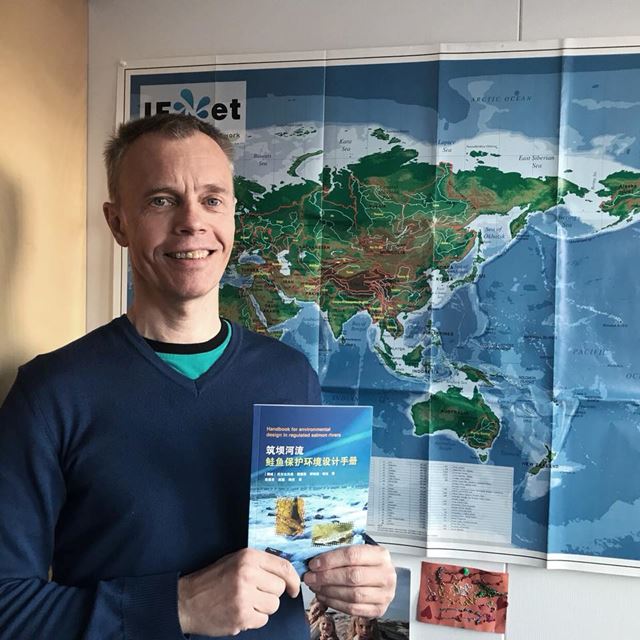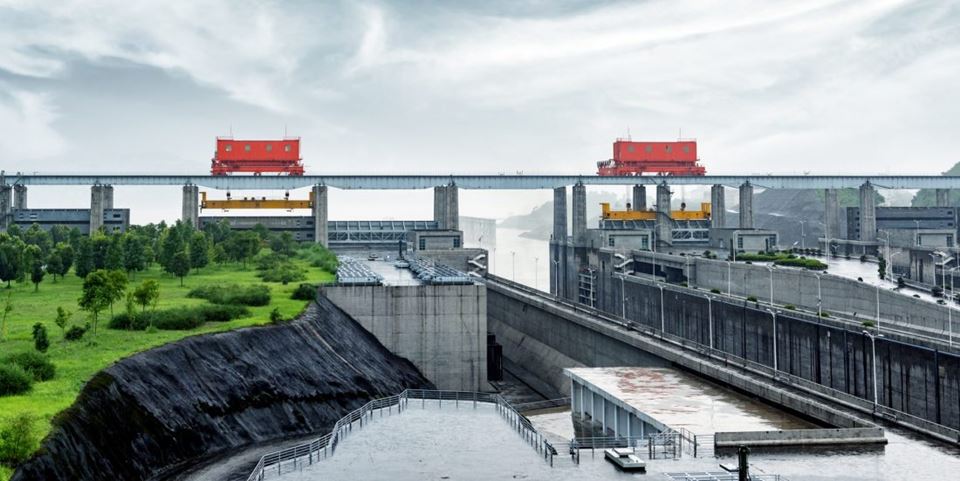Perhaps you have already heard about the speed at which China is developing its wind and solar power resources? However, water is the biggest renewable energy source in China – even greater than wind and solar put together. In fact, China is the world’s largest producer of hydropower, and continues to invest huge sums in this energy source.
About the environmental design handbook
The Handbook for Environmental Design in Regulated Salmon Rivers is a guide for hydropower developers showing them how to assess, develop and implement measures for improving the living conditions of salmon while at the same time ensuring profitable power production.
It is based on many years of cross-disciplinary research carried out in Norway and documented by Thorbjørn Forseth and Atle Harby.
“We see that consideration for the environment is becoming a more important factor in development projects”, says Senior Researcher Atle Harby at SINTEF, who has written the “Handbook for Environmental Design in Regulated Salmon Rivers” together with Senior Researcher Torbjørn Forseth at the Norwegian Institute for Nature Research (NINA). “The power companies are subject to increasingly stringent requirements to facilitate healthy living conditions for fish populations and to ensure that power plant operations are adapted to environmental needs. “So we’re hoping that a handbook can be a useful tool for promoting environmentally sound hydropower developments”, he says.
More salmon and more power
For more than ten years, the two scientists and their colleagues at SINTEF, NINA, NTNU and UNI Miljø have been researching into how salmon can thrive while co-existing with profitable hydropower production from the same river system. Their findings show that in many situations, improved habitats and living conditions for salmon can be combined with increased levels of power production. The answer lies in the design of measures implemented in the river system combined with environmental flow releases from reservoirs.

Atle Harby recently received the Chinese version of his environmental design handbook. Photo: SINTEF
In order to make the researchers’ results accessible to the hydropower sector and authorities, their sound advice was assembled in the “Handbook for Environmental Design in Regulated Salmon Rivers”. The handbook was first published in autumn 2013 and is being used in Norway. It has previously been translated into English, and this promoted a great deal of interest worldwide. It has now been translated into Chinese.
Works for other species too
Contact with Chinese researchers was made about ten years ago, most notably with the Institute for Water Resources and Hydropower Research (IWHR), the North China University for Water Resources and Electric Power, and the University of Tsinghua.
Funding from the Research Council of Norway enabled the researchers in Trondheim to establish a new collaborative relationship with Chinese researchers in the two fields of environmental design in river systems and large-scale balancing power from hydropower to support intermittent, renewable energy sources such as wind and solar. This led to a number of seminars and meetings, and the co-authoring of research articles.
The researchers from Trondheim have held several courses on environmental design in river systems based on the handbook for Chinese researchers in China. Atlantic salmon do not occur in China, but most of the methods and models described in the handbook are also applicable to other species.
“We encountered some language barriers”, says Harby. “Some Chinese are very conversant in English, but by no means all of them. This applies both to researchers and administrators, so they suggested that the handbook be translated into Chinese”, he says.
The Chinese obtained the rights to prepare their own version of the manuscript and to use the figures and photographs in the original. After a prolonged process, the book was finally published late in 2017.
International know-how
The environmental design handbook has been disseminated among research communities and administrative offices around the world, including in the EU and North America. Last year, the Norwegian researchers held courses on environmental design at the Centre for Continuing Education and Professional Development at NTNU as well as in Romania.
In Norway, the relevance of the book has been revitalised in connection with the multiple revisions of t licensing terms for older hydropower plants. In these situations, the application of environmental design can contribute towards the establishment of improved fish habitats without compromising power production operations.
The handbook is divided into two main sections that describe how to make an assessment of a river system, and which mitigation measures can be implemented by the developer.


